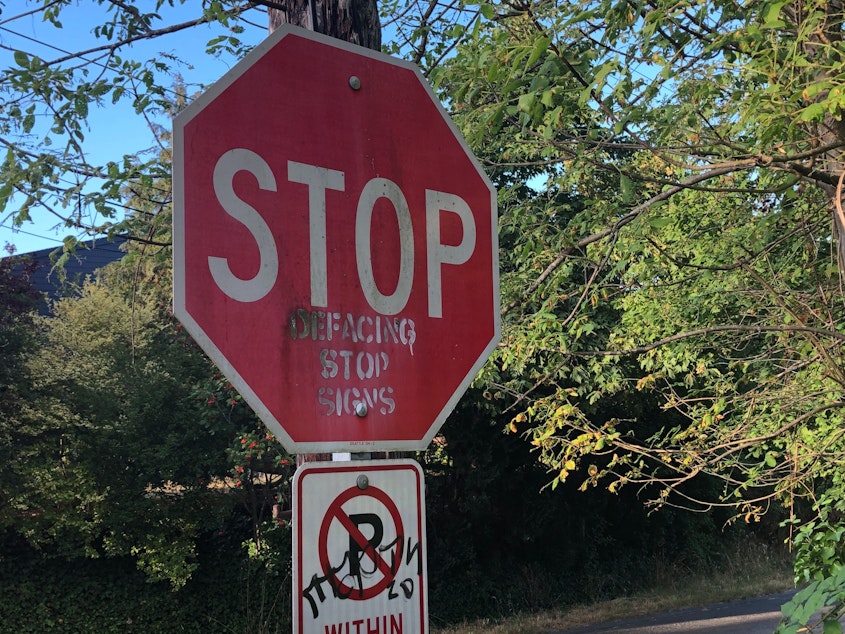No more stop signs for Washington's bike riders ... sort of

Starting Thursday, people riding bikes in Washington state won’t have to stop at most stop signs.
That is, they legally won’t have to stop.
That’s because a new law will allow them to treat almost all stop signs as yield signs. People riding bikes will still have to slow down at stop signs, look around, and yield to any pedestrians and cars that have already reached the intersection. But, if there’s no one around, the bike can roll on through.
“All this law does is kind of make official what everyone was doing already,” said Tom Fucoloro, the founder and editor of the Seattle Bike Blog. “You know, when you’re on a bike, it’s always been a little unclear what exactly ‘stop’ means.”
This new law clarifies things. It doesn’t change who has the right of way: If there’s a car or pedestrian already in the intersection, the person on the bike has to stop. But, if there’s no one there, the cyclist can proceed through the intersection at a speed that feels safe to them; there’s no requirement for them to put their foot down or count to three.
Cyclists will still have to stop completely at train tracks and behind school buses with their stop signs out.
Arkansas, Delaware, Oregon and Idaho already have similar measures on the books; Idaho’s law dates back to 1982, giving stop-as-yield measures for cyclists their trademark name: the “Idaho stop.”
These measures are controversial. Proponents cite studies showing that they reduce crashes and improve road safety by allowing cyclists to get out of intersections efficiently and not pause in cars’ blind spots. Proponents also say it’s a common-sense measure that allows law enforcement to focus on truly dangerous behavior on the part of either cyclists or drivers.
But opponents say it’s important for bikes to follow the same rules of the road as everyone else if they want to be afforded the same rights.
State representative Jesse Young, of Gig Harbor, voted against the legislation because he wanted it to include a budget for driver education, to let them know that the change was coming.
“I think that everybody right now, prior to this bill passing — it’s safe to assume that everybody expects that a bicyclist on the road will stop at a stop sign,” he said. “And I think that it’s very concerning that we would pass a law without training people first.”
Vicky Clarke, the policy director of Washington Bikes, helped advocate for stop-as-yield legislation for Washington state cyclists. She agreed with Young that driver education is critical, but, she added, “The way this law is going to work for people biking is that it’s not going to change their interactions with vehicles, right? This is about navigating a stop sign when there is no cross traffic.”
Young’s other objection to the law was that, if cyclists make a mistake and roll into an intersection when someone else — a car or pedestrian — is already there, that could be confusing and dangerous.
But Fucoloro, of the Seattle Bike Blog, said that’s an unlikely situation, because bikes are not the same as cars.
“Cars are so big and so heavy and have so many blind spots that the dangers they pose are much higher,” he explained. “But, when you’re on a bike, you’re just aware of everything around you. It’s very easy for you, when you’re biking, to just casually realize when is it that you need to stop and when is it that you don’t.”
Fucoloro said riding a bike is more like being a pedestrian in terms of your 360-degree view and your vulnerability — and hence vested interest in avoiding crashes.

